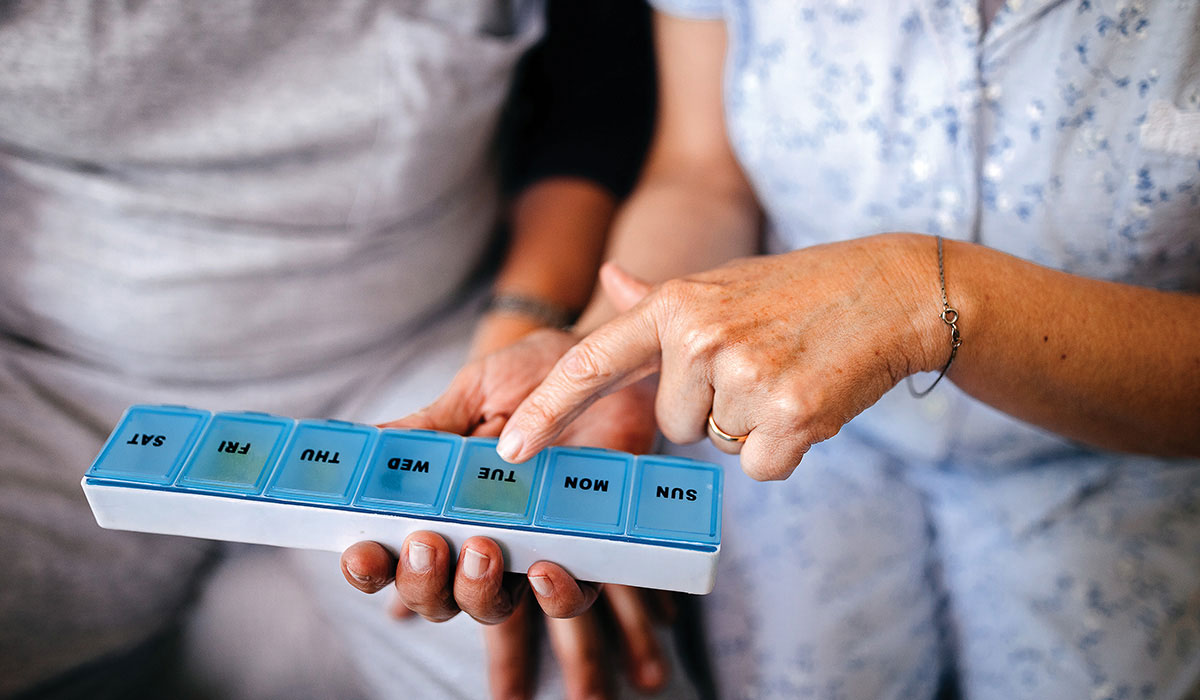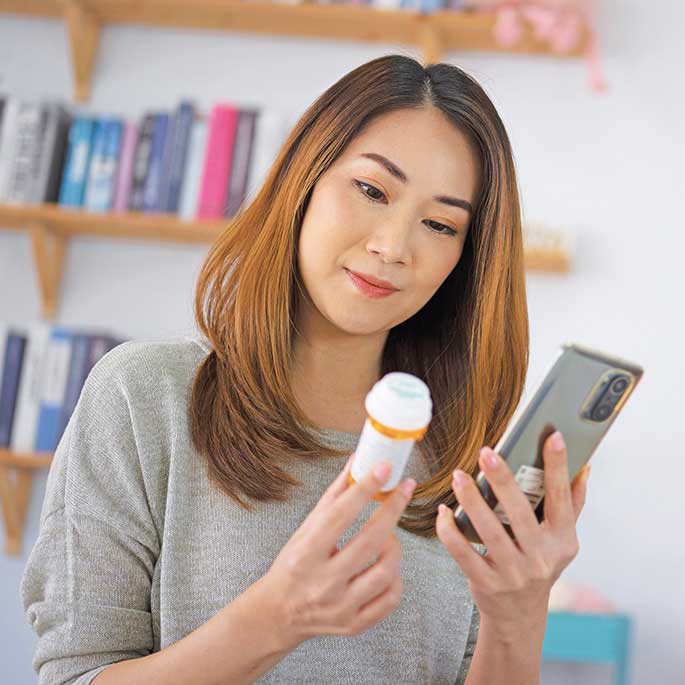April 2021
Medication safety means more than making sure your prescription has a safety cap or that the seal on a new bottle of an over-the-counter (OTC) drug is unbroken. What happens after you get those medications home can also make a difference in how they work and how you feel.
Whether you take the occasional OTC pain medicine or several prescription drugs, follow these tips to avoid common mistakes at home.
Review your medication carefully
Before taking home any new medication, read the label to make sure it matches what the doctor ordered. If the drug name or dosage differs, ask your pharmacist to verify the order. The name may be different if a name brand drug was substituted with a generic, which works the same but often costs less.
Drug labels also include a physical description of each medication. Double-check that the pills match their description. If a manufacturer changes, the pill may look different than what you are used to taking. When in doubt, ask your pharmacist.
Next, read the medication printout. It explains common and rare side effects. It also includes any special instructions, such as foods and activities to avoid.
Store your medications out of the bathroom
Although the bathroom may seem like a logical place to store medication, the worst place to keep your medicine is in the medicine cabinet or cabinet drawer in your bathroom. That is because the heat and humidity from taking a hot bath or shower can deteriorate your medication and supplements.
Instead, store medications in a dedicated kitchen or hallway cabinet that is out of reach of children and pets. Be sure to review the storage instructions on the medication printout. Some medications need refrigeration or should be kept away from light.
Get control of your medication schedule
Forgetting to take your medicine is a common mistake. To help you remember, keep a medication schedule, like this one from the National Institute on Aging, in a visible location.
Use tools to boost medication adherence. A medication dispenser labeled with the days of the week can also help you know if you have taken your dose for the day. Another option is to set reminders on your smartphone. The My GNP mobile app is another helpful tool because it has an option to set medication reminders and you can even assign a Med Buddy to help you remain adherent.
To make it easier to take your medications as directed, talk to your pharmacist. They have several solutions, such as automatic refills, convenience packaging and medication delivery. Your pharmacist can also help you avoid other common medication mistakes that can interfere with your treatment plan.
Watch what you eat and drink
Some medications can interact with food in ways that make them less effective. This can contribute to side effects. Your medication printout will tell you what foods, if any, to avoid — and whether to take the medication on an empty stomach, with food or with a full glass of water. This information is included to reduce medication side effects and increase medication efficacy. Follow the instructions fully.
Alcohol can also interfere with some medications, particularly heart medications. Alcohol also increases your risk of drowsiness, which is already a common side effect of many drugs. Ask your doctor or pharmacist whether you can drink alcohol while on your medication. To reduce the health risks associated with alcohol, the Centers for Disease Control and Prevention recommends no more than one drink per day for women and two drinks daily for men.
Be aware of dual-ingredient medications
Combining medications, particularly pain medications, with the same active ingredient can lead to accidental overdoses. For example, taking too much acetaminophen, the active ingredient in Tylenol, can cause liver injury and even death.
Acetaminophen can often be found in combination drugs, such as those for allergies, cold, flu and sleep issues. The U.S. National Library of Medicine has a list of single-ingredient and combination products containing acetaminophen.
According to the U.S. National Library of Medicine, adults should take no more than 3,000 mg of single-ingredient acetaminophen, such as Tylenol, in a day — and less if you are over 65. The Food and Drug Administration (FDA) advises adults to limit acetaminophen in combination products (those with acetaminophen and at least one other medication) to no more than 4,000 mg of acetaminophen in a 24-hour period.
You also need to space out your dosing. Do not take more than 1,000 mg of single-dose acetaminophen every six hours. For example, that means taking no more than two Extra Strength Tylenol pills, or its generic equivalent, every six hours — and no more than six pills per day.
To avoid acetaminophen overdose, follow the recommendations by the FDA:
- Do not take more than one OTC product containing acetaminophen.
- Do not take a prescription plus an OTC product that both contain acetaminophen.
- Do not exceed the recommended dose on any product containing acetaminophen.



